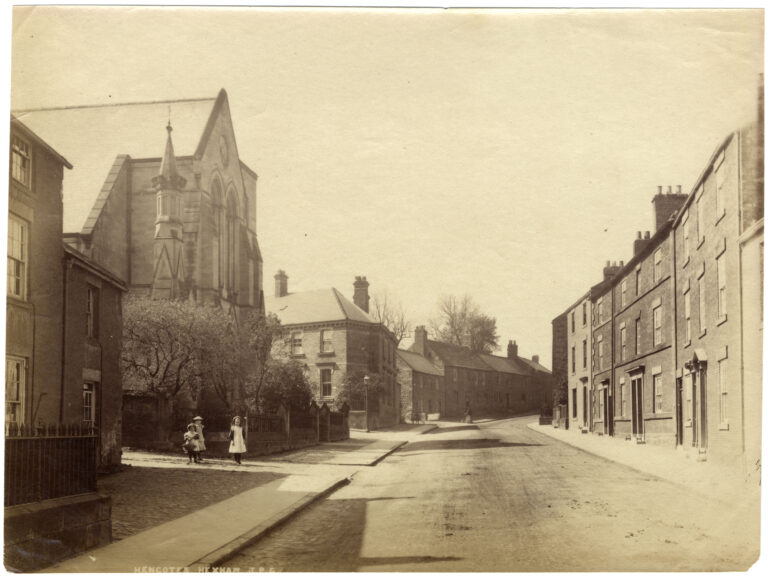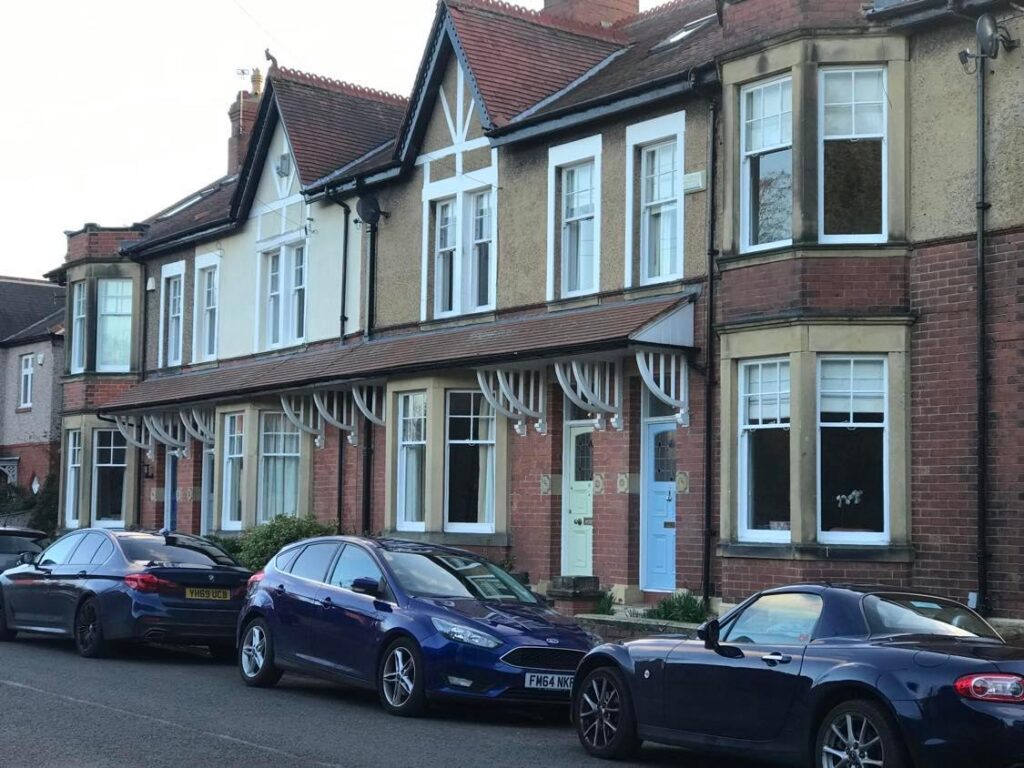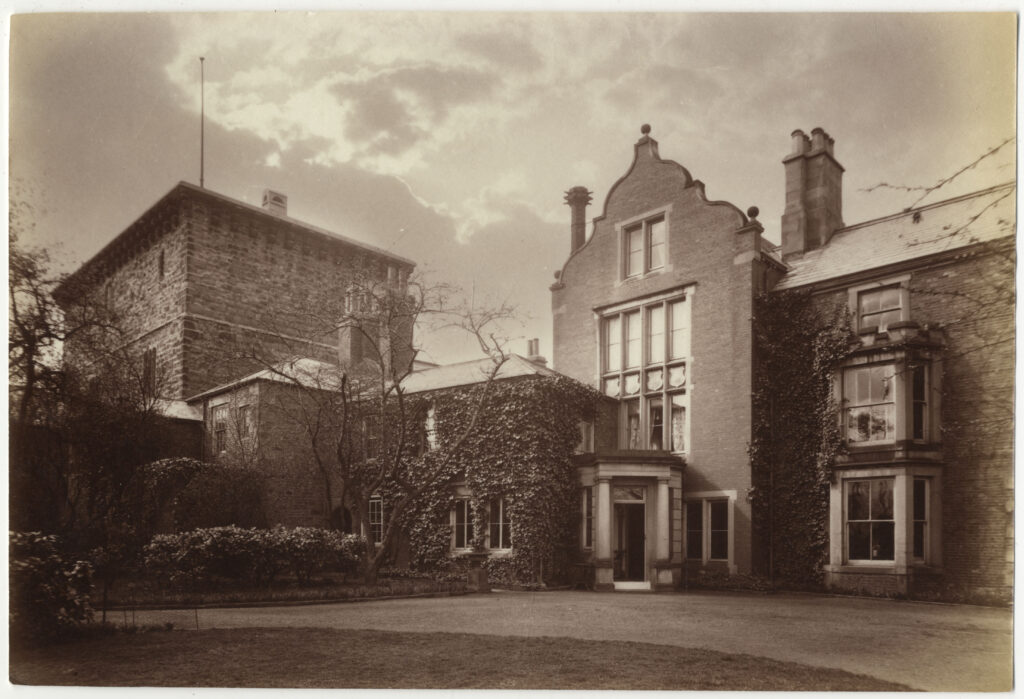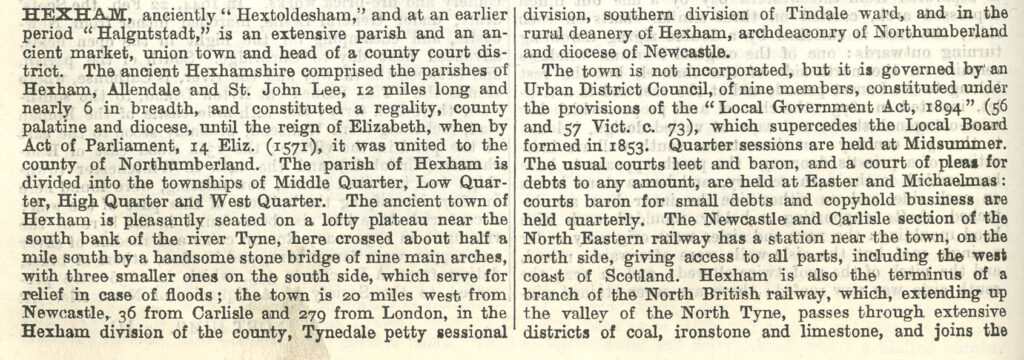STARTING OUT
Before beginning research into the history of a property it is helpful to undertake the following tasks.
Consider What You Know About the Property
- If you have access to the property deeds you may be able to discover exactly when the property was built – see section on deeds.
- Maps, particularly Ordnance Survey maps, can help with this – see section on maps and plans.
- Do the architectural features of the property help date it? Particular features can help date a property. For example, mock Tudor cladding and French windows are two of the features of some Edwardian properties.
Give it a go
Have a go at trying to date the following three properties using their features.
Answer goes here.
Answer 1
Answer 2
Answer 3
Answer 1
Answer 2
Answer 3
- A Newcastle terraced house – 1908.
- Prospect House, Hexham – 1888.
- The Grapes Inn, Hexham, mid 19th century
- For example, was it previously used as a church or school or have another former usage?
- Has the function of the property changed over time?
- Have additional stories been added to the property?
- Have rooms been added to the property?
- Have there been any other changes?
It may be possible to learn more about the changes and discover others that you are unaware of by using Local Authority planning records or architects’ records – see section on planning records.
- Do you have any documentary evidence – letters, photographs etc.
- Do your neighbours have any information to share with you?
Historic England maintains a register of buildings that are listed because of special architectural or historical interest. The register can be found here (Search the List – Find listed buildings, monuments, battlefields and more | Historic England). The register contains basic information about the history of the property and sometimes a photograph of it. It is worth looking at this before starting your own research.
The Keys To The Past website provides information about sites of archaeological and historical significance in Northumberland and Durham. This is called the Sites and Monuments Record and contains basic information about historical buildings and sites. The website can be found here Keys To The Past – This site unlocks the archaeological secrets of County Durham and Northumberland.).
Place Your Property
You should discover which administrative areas your property lies in. You should identify the ecclesiastical parish, township, and Local Authority that served your property as well as the county in which the property is/was situated. As your research progresses you should be able to establish whether the property formed part of a manor or estate.
This module focusses on properties in Hexham.
Ecclesiastical parish: Hexham
Township: Hexham
Local Authority: Hexham Urban District Council
County: Northumberland
It is possible that the property did not always form part of the same county. Prior to 1974 some parts of Tyneside that are now part of the Tyne and Wear district formed part of Northumberland.
Sources for establishing this information include:
- County histories, in this case, the History of Northumberland
- Local directories
- Northumberland volume 3, pp. 105-311
- Archives staff are able to advise.
Give it a go
This property is in Gosforth, Newcastle upon Tyne. List the ecclesiastical parish, township, Local Authority and Council areas that the property formed part of.
Ecclesiastical parish: Gosforth
Township: South Gosforth
Local Authority: Gosforth Urban District Council and from 1974 Newcastle City Council
County: Northumberland and from 1974 Tyne & Wear.
Answer goes here.
Answer 1
Answer 2
Answer 3
Look At Some Reference Books
There are a number of general and local books that may be useful when researching the history of a property in Hexham.
Old Hexham: a pictorial record – Charlton, Morton
Hexham 1854-1939: local government in a market town – Jennings, David
Hexham heritage – Corfe, Tom
Hexham: history and guide – Beckensall, Stan
Hexham through time – Beckensall, Stan
Hexham remembered: an illustrated glimpse into Hexham’s past – Kristensen and Dallison
Two Gentlemen Photographers: Images of Hexham and Dukes House from 1864 – Edward Backhouse and John Mounsey
Historic Hexhamshire – Frederick Moffat (1986)
Memories of Hexhamshire – Kristensen, Hilary
Hexham: A short history and guide – Graham, Frank (Northern history booklets)
Portraits of Northumberland: the postcards of Gibson & Son – Ham, Philip
The heart of all England – Jennings et al.
People and places from Hexham’s heyday: a stroll around Hexham – Judy Lloyd
Vanishing Hexham street and place names – Dallison, Colin
Hexham Lives – Hexham Local History Society
A pack of idle sparks: letters from Hexham on the church, the people, corruption and scandal 1699-1740 – Greg Finch
The Hexham Riot – Linda Williams
Riot: the Hexham militia riot, 1761 – Tom Corfe
Innocent blood: the Hexham Riot of 1761 – Keith Armstrong
Tynedale in the Great War – Brian Tilley
Tynedale at war: 1935-1945 – Brian Tilley
The following book is a useful guide to researching the history of a property:
Nick Barratt Tracing The History of Your House: A Guide To Sources (PRO 2001)
Explore The Resources Available At Your Local Library
All Northumberland Libraries including Hexham Library provide free access to the subscription sites Ancestry, FindMyPast and British Newspaper Archive. We will explore these sites within this module. Some libraries hold Local Studies collections – collections of books, photographs and other material relating to the area that they serve.







